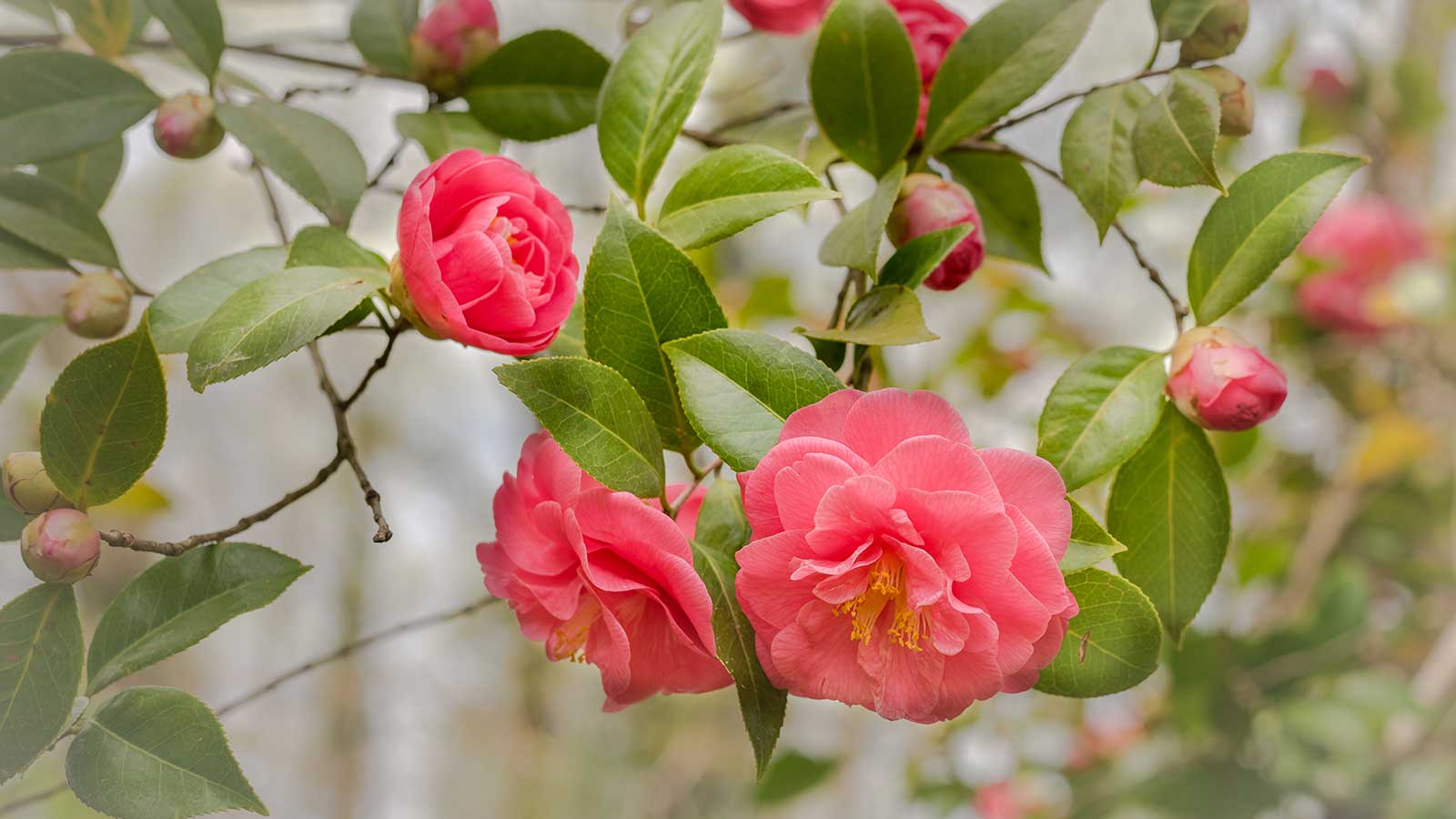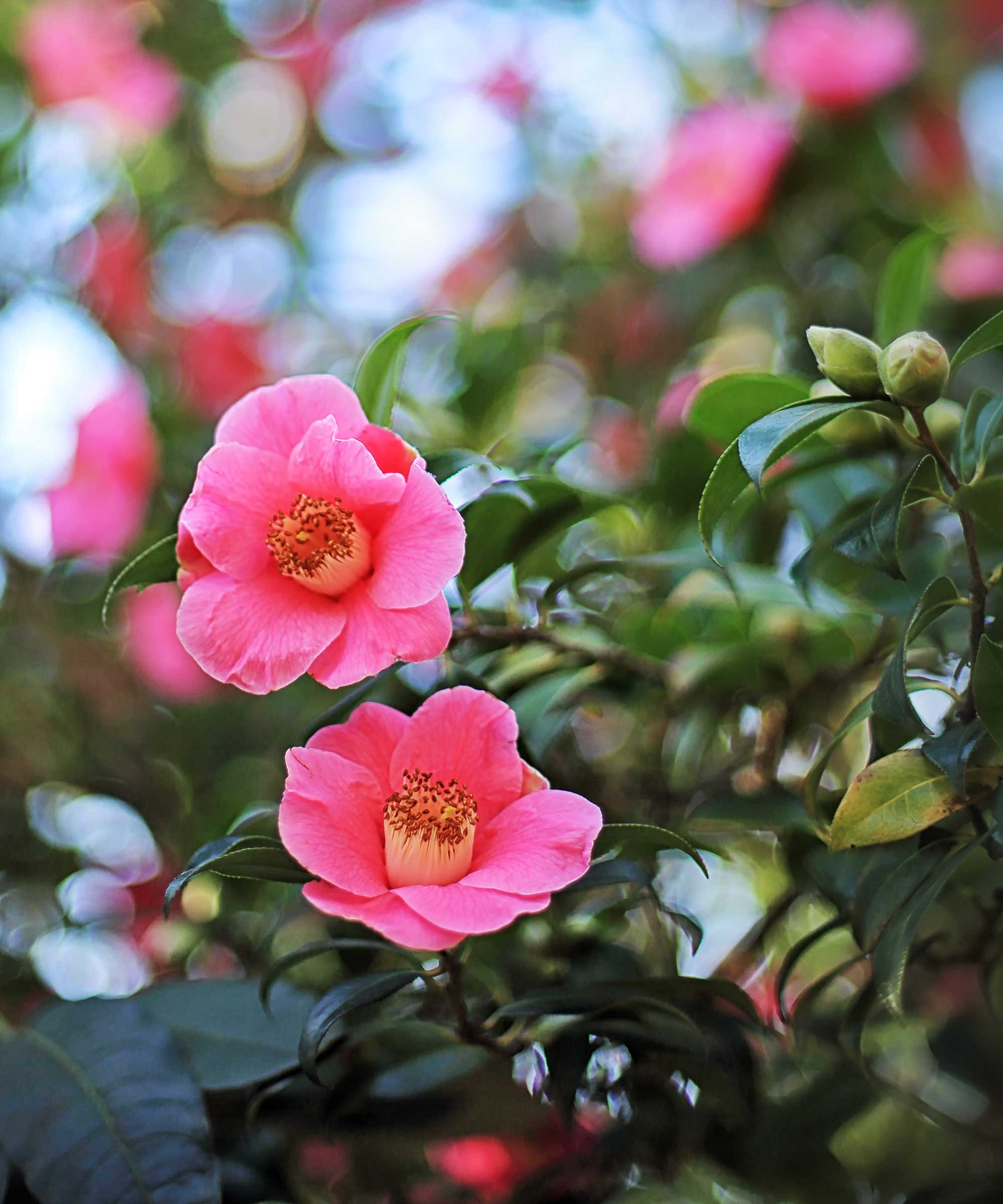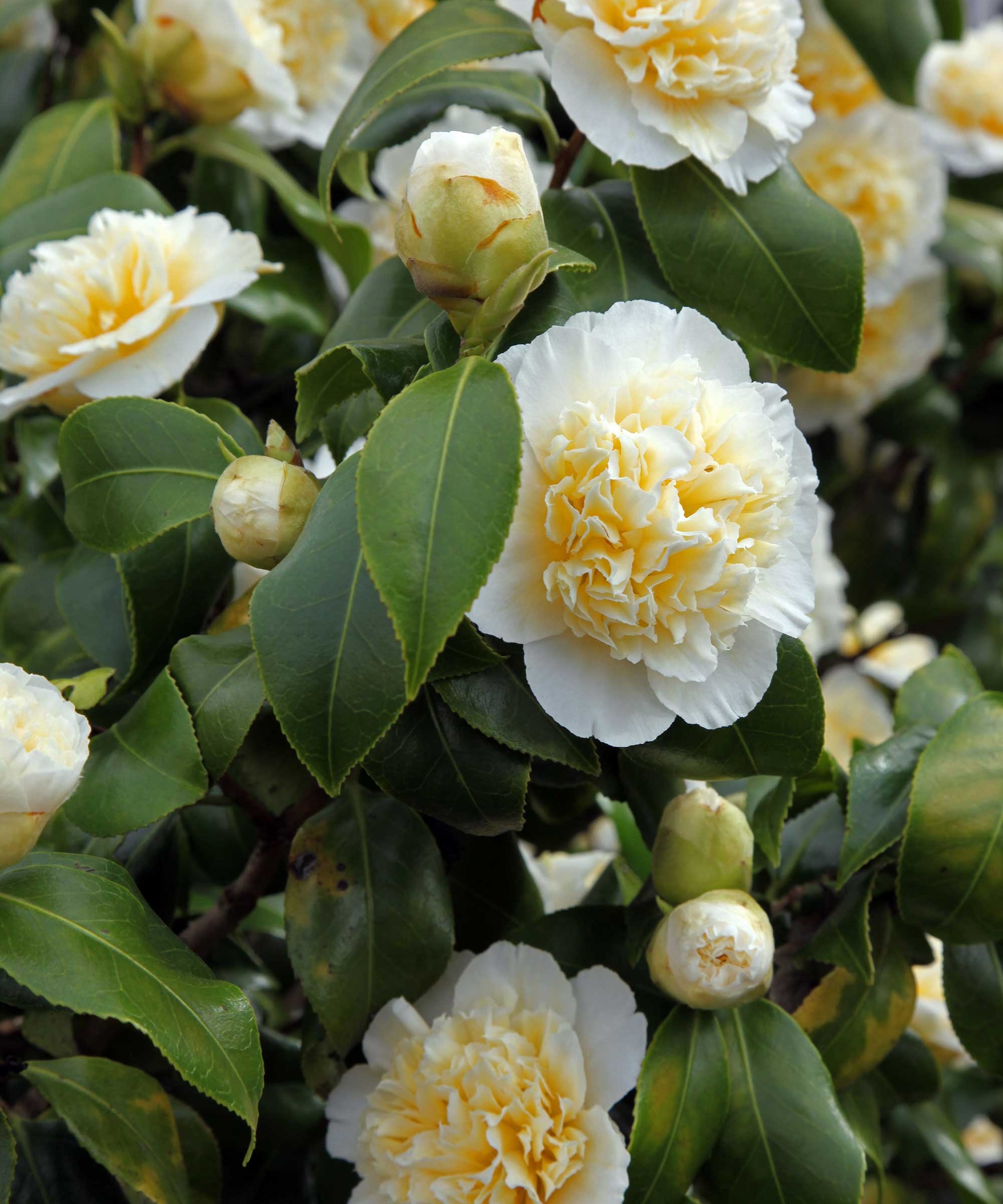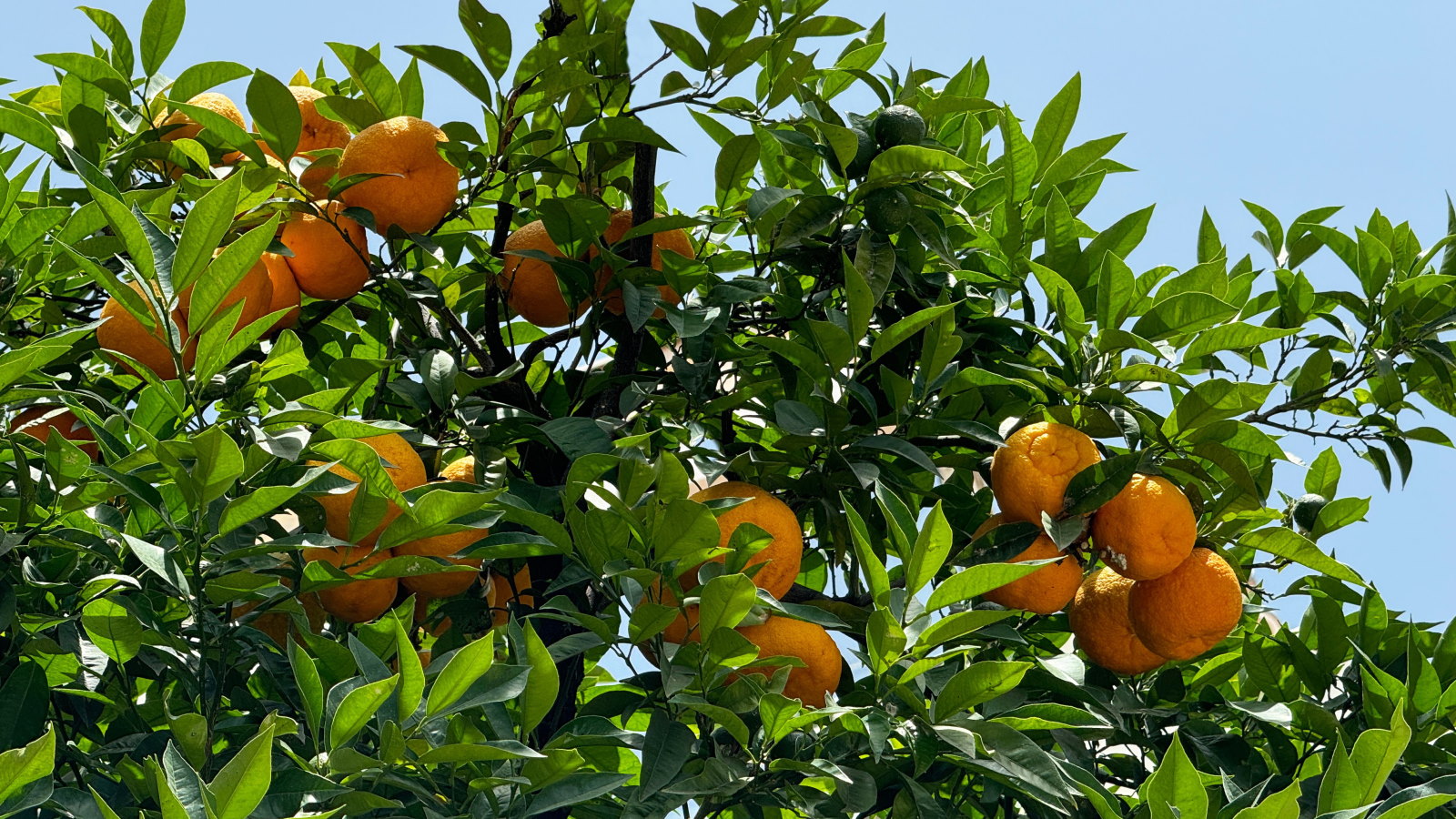How and when to fertilize camellias – feed these flowering shrubs correctly with these expert tips
Fertilizing these plants properly will encourage beautiful blooms year after year


Q: I have recently moved house and my new front yard includes a camellia shrub. I have never had one of these before, but am eager to keep it thriving as its flower are gorgeous. Will it need fertilizing, and if so, what is the best way to do this?
A: How lucky to inherit a camellia – a beautiful spring-flowering shrub that provides blooms in red, white, or pink, depending on the variety. Fertilizing them can strengthen the plants and encourage more blooms, but it needs to be done in the right way, at the right time.

Camellia japonica ‘Lily Pons’
How to fertilize camellias
One of the most important things to remember when caring for camellias is that they like acidic conditions, as azaleas and rhododendrons do. 'On chalky or alkaline soils, they are unable to absorb enough iron and manganese to make the chlorophyll to keep their leaves green,' says Anne Swithinbank, a gardening expert. This results in yellowing foliage – and often the leaves are smaller, too. So, opt for an ericaceous fertilizer, such as Dr. Earth's Acid-Lovers organic feed from Amazon, to keep their environment optimal for healthy growth.
Follow the application instructions on the label as these can differ slightly from product to product.
When it comes to watering your camellias, remember that hard tap water will increase the alkalinity of the soil. If you live in an area that has this, it's much better to invest in a rain barrel so you can use harvested rainwater where possible.
Mulching with well-rotted compost in early spring is also beneficial for these plants, says gardening expert John Negus – although he warns to keep it away from the stems (this can result in them rotting). This will add valuable nutrients to the soil as it breaks down. It will also help the soil maintain moisture, which can prevent buds from dropping in the summer, explains Anne. Rake aside any existing mulch before applying fertilizer, and then replace it, topping it up if needed.

Camellias need acidic conditions to thrive, so bear this in mind when feeding and watering them

Having trained at Kew Gardens in London and worked in parks department nurseries and as Glasshouse Supervisor at RHS Wisley, Anne has been a freelance horticulturist since 1986. Anne writes for Amateur Gardening magazine in the UK and has been a panelist on BBC Radio 4’s Gardeners’ Question Time for 27 years.

John has been a garden journalist for over 50 years and regularly answers readers' questions in Amateur Gardening magazine. He has also written four books and has delivered many talks over the years on horticulture.
When to fertilize camellias
According to John, the best time to feed camellias is usually around April – which is when the blooms are fading. This will help to support the plants after they finish flowering, he says. If you're using a slow-release fertilizer, you can give them a second application in early summer to encourage strong bud development for next year's flowers. Fast-release fertilizers can be applied more frequently throughout the growing season – check the instructions on yours for specific guidelines. Either way, don’t feed camellias after the end of July, John advises.
The Royal Horticultural Society agrees, noting how fertilizing camellias later on in summer can cause the buds to drop. This is because it encourages a burst of fresh growth, which can then be damaged by the first frosts in the fall.

Camellia 'Jury's Yellow' has pretty yellow blooms
Fertilizing is an easy part of camellia maintenance and will help them thrive, as long as you get the timing right and use a feed that's well-suited to their needs. And if you decide to add a potted type of camellia to your collection, the advice above still stands – although it's also a good idea to plant them in ericaceous compost for an extra boost.
Sign up to the Homes & Gardens newsletter
Design expertise in your inbox – from inspiring decorating ideas and beautiful celebrity homes to practical gardening advice and shopping round-ups.

Holly started writing about gardening five years ago, and she is a regular contributor to Homes & Gardens. She has also written many gardening features for Woman & Home and Real Homes, too. She has previous experience as a professional gardener, where she helped to plant and maintain private gardens. Holly has also looked after allotment plots over the years and loves to grow her own flowers and veggies from seed. In her spare time, she enjoys visiting local gardens, botanical drawing, and tending to her ever-growing collection of houseplants.
-
 Kevin Bacon and Kyra Sedgwick's rustic kitchen island is stunning, but controversial – designers say you can get the look without the hassle
Kevin Bacon and Kyra Sedgwick's rustic kitchen island is stunning, but controversial – designers say you can get the look without the hassleA popular material finds an unorthodox home in the couple's kitchen, but experts disagree on whether it should be used – here's how to do it instead
By Sophie Edwards
-
 How to grow grapefruit for homegrown sweet and tangy, highly nutritious harvests – a fruit tree expert shares their planting and care tips
How to grow grapefruit for homegrown sweet and tangy, highly nutritious harvests – a fruit tree expert shares their planting and care tipsFrom planting to harvesting, this is all you need to know about grapefruit trees
By Drew Swainston